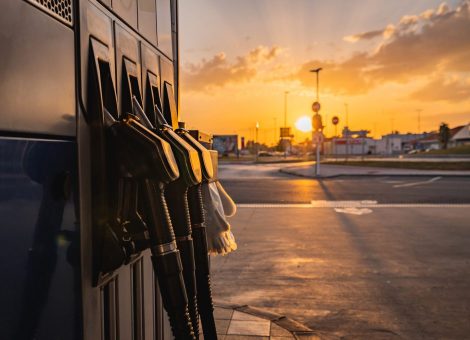Key steps for Australian service stations to stay ahead this summer
Our Marketing Executive, Lisa Cuthbertson, was exploring Australia before getting caught up in the country’s strict Covid-19 lockdown, with Melbourne enduring over a year of lockdown, and spotted several trends emerging in Melbourne during her time there.
With Australia having suffered one of the most stringent and longest lockdowns in the world, 2021 has continued to be a tough year for Australian business owners. From setting up a website or placing an order for stock that won’t arrive until late 2022, or simply apologizing endlessly for the late delivery of products due to excessive delivery times and price gouging. It is clear Covid-19 has had a severe economic impact on Australia with 47% of businesses reporting decreased revenue at the peak of the pandemic according to the Australian Bureau of Statistics.
Australia experienced a 77% decline in domestic aviation fuel consumption due to Covid-19, this comes as no surprise as each state gradually made the decision to lock their borders, and then cancel overseas tourism — which lasted for more than a year. The working from home restrictions, strict 5km rule, and a curfew led to a 36% drop in petrol sales as stated by the Australian National University.
Has Australia fallen behind?
As Australia experienced the longest lockdown in the world, it comes as no surprise that service stations here are struggling to regain volume. But with the entire world experiencing similar (albeit shorter) lockdowns, maybe the Aussies can look for inspiration from the rest of the world.
During the height of the lockdown, Victoria and NSW were restricted to a 5km radius rule, forcing many people to become reliant on their local ‘servo’ due to not having a supermarket within their radius. With many service stations picking up on the need for the delivery of essential items such as bread, milk, and ice cream! Not only did service stations look for alternative ways to create revenue but many quick-service restaurants (QSR) began selling bread and milk with their drive-thru orders.
Before the pandemic, less than a quarter of all businesses had staff working from home, with this set to never go back to pre-pandemic numbers, the rise in fuel consumption may never fully go back to pre-Covid normal.
The vastness of Australia plays an integral part in the Australian fuel and convenience industry with many people driving extraordinary distances regularly for work and vacation, but the sheer magnitude of the country also means that Australians have been slower to adopt EV and adapt to delivery services and QSR. With the Australian Electric Vehicle Council now calling on Australia’s federal government to “urgently” introduce policies to accelerate EV adoption in Australia, some other countries have been quicker to embrace the change, which presents a great opportunity for Australian retailers to learn from their overseas counterparts.
Key steps to stay ahead this summer
Technology and the internet have changed the way we shop, for good. The convenience offered by internet shopping has caused a steady decline in sales for physical retail stores. However, due to the excessive delivery times and the length of time they have spent indoors, many Australians are keen to get back to shopping in physical stores and traveling beyond their local neighborhood.
Experiential retail
Many stores are turning their attention to “experiential retail”. Experiential retail is the idea that stores should be used to give consumers an immersive experience. It’s not just about buying goods, but the things that customers can get from you that they can’t get online. It’s all about creating emotional connections and shared experiences for your patrons.
For service stations and convenience stores, this involves delivering a service and experience that your customers just can’t get online. Welcoming seating areas, fresh deli counters, and arcade games are just some of the things we’ve seen introduced into service stations to improve the overall customer experience.
Cleanliness
Price isn’t the only factor that influences your margin. After extensive research, it has been made clear that a clean and safe environment has become a huge factor in repeat purchases. Covid-19 has every part of our lives and its effects may leave a lasting impression on the customer psyche. It’s likely that this won’t just be a passing phase.
With multiple messages from the Government informing the public that “good hygiene starts here”, hygiene and cleanliness are now an important part of your overall customer experience.
Understanding consumer behavior
The best way to stay ahead of the game is to fully understand who your customers are, how they behave, and what they want from you. And the only way to do that is with reliable data. In a time where consumer behavior is shifting faster than it ever has before, fuel retailers need to put themselves in a position to adapt too — or risk being left behind. Understanding consumer and competitor behavior could pave the way to success.
In summary, relying on your fuel pricing strategy is not enough to protect or increase your market share. Customers now expect intentional corporate citizenship, where fuel retailers are putting customer health and safety at the heart of their organization.
Re-analyzing competitors and continuously updating your consumer intelligence will give you the insight you need to set tactics to help you get ahead this summer and adapt to any changes that come your way.
With over 40 years experience of serving fuel retailers across the globe, Kalibrate has the experience and knowledge to help you adapt and create new opportunities.
From selecting the right locations to optimizing your existing network to more profitable pricing — Kalibrate’s expertise will help drive better decision making in 2022.
Learn more in this blog: The importance of customer perception and the impact on pricing
Read more articles about:
Fuel pricingSubscribe and get the latest updates
You may unsubscribe from our mailing list at any time. To understand how and why we process your data, please see our Privacy & Cookies Policy
Related posts
Fuel pricing
November 2025. Kalibrate's Canadian Petroleum Price Snapshot
Kalibrate conducts a daily survey of retail gasoline, diesel, propane, and furnace fuel prices in 77 Canadian cities....

Fuel pricing
October 2025. Kalibrate's Canadian Petroleum Price Snapshot
Kalibrate conducts a daily survey of retail gasoline, diesel, propane, and furnace fuel prices in 77 Canadian cities....

